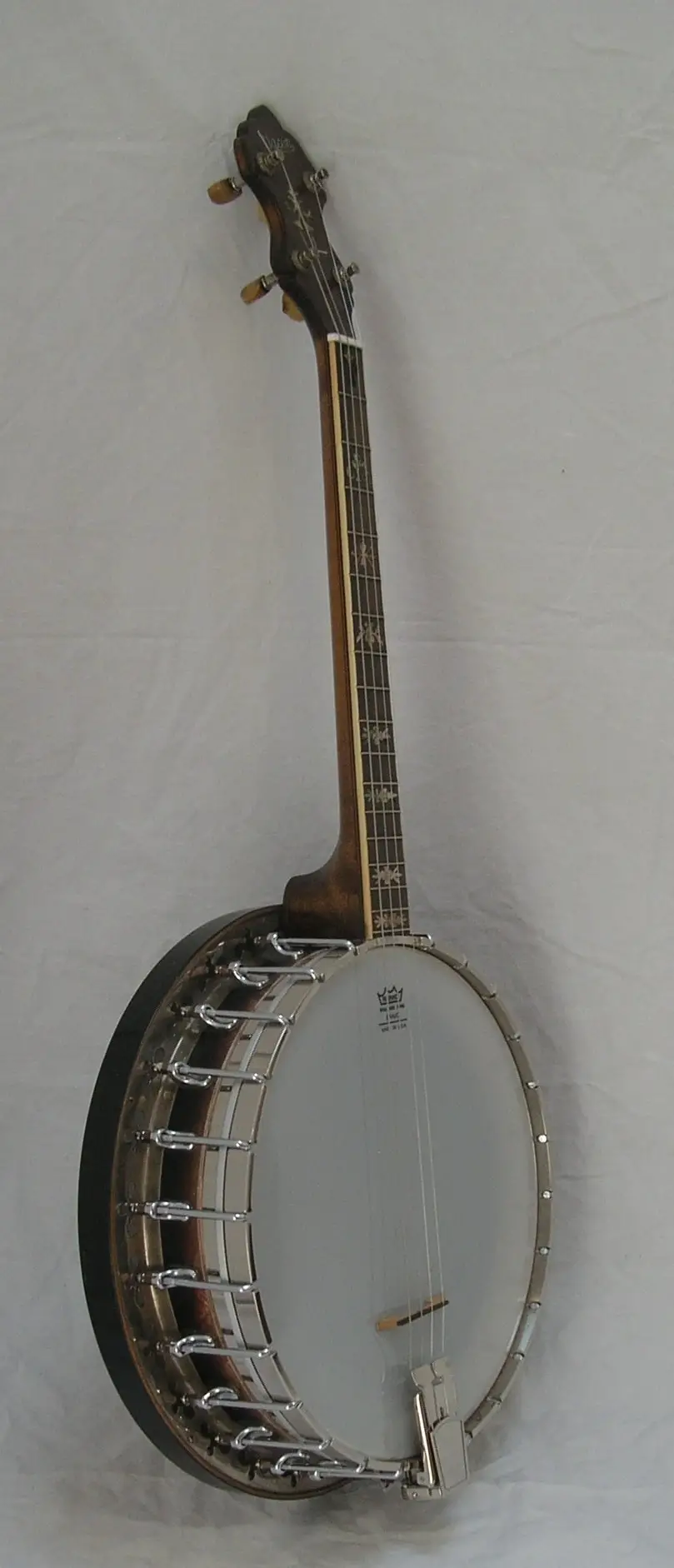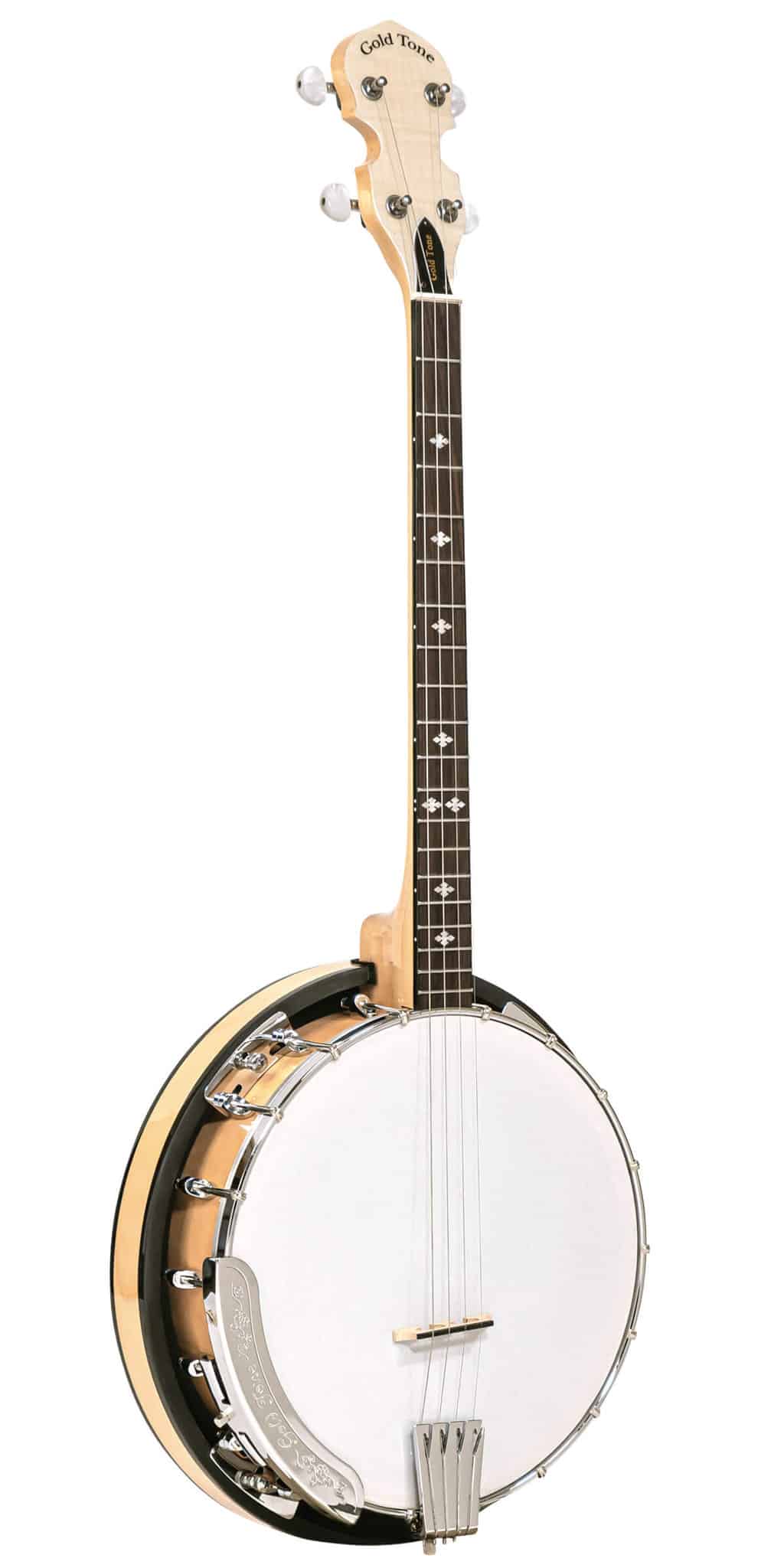Have you ever heard a tenor banjo in action? If so, you know that it has a unique sound that stands out from other instruments. But what exactly is a tenor banjo? In this guide, I’ll explain what a tenor banjo is, how it differs from other types of banjo, and its unique sound.
History of the Tenor Banjo
- The tenor banjo was first developed in the 1910s, during the height of the ragtime and jazz music eras.
- The instrument was created by adding a fourth string to the traditional four-string banjo, giving it the distinctive sound that jazz musicians were looking for.
- The tenor banjo quickly became popular among jazz and ragtime players, and it was used extensively during the 1920s and 1930s.
- In the 1940s and 1950s, the instrument began to be used in a variety of other genres, including country, folk, and rock and roll.
- The tenor banjo is still popular today, and is used in many genres of music, including bluegrass, jazz, and folk.
Components of a Tenor Banjo
- Head – a plastic or calfskin-covered round drumhead that gives the banjo its tone
- Neck – a long, thin neck of hardwood, with a nut at the top, and a fretboard at the bottom
- Tuners – metal tuning keys that hold the strings in place
- Bridge – a small, adjustable piece of wood that sits between the strings and the head
- Strings – typically four strings, made of metal or nylon, that are stretched across the neck and bridge
- Tailpiece – a metal bar that holds the strings in place at the end of the neck
Tuning a Tenor Banjo
A tenor banjo is typically tuned to GDAE, an octave below a mandolin. This tuning is also known as “Irish tuning” and is the most commonly used tuning for a tenor banjo. To tune the banjo, a chromatic tuner or electronic tuner is recommended. The strings should be tuned from the fourth string (G) to the first string (E). Once the strings are tuned, the bridge should be adjusted to ensure an even tone. To adjust the bridge, loosen the strings, move the bridge up or down, and then re-tighten the strings.
When playing chords, it is important to ensure that the strings are properly intonated. To do this, fret each string at the 12th fret, and compare the pitch of the fretted note to the open string. If the note is sharp, the bridge should be moved away from the neck; if the note is flat, the bridge should be moved towards the neck. Once the intonation is correct, the banjo is ready to be played.
Playing Techniques
- Alternating Bass: A technique used to provide a steady rhythm while playing the melody line. This technique is used by alternating the thumb and index finger on the lower strings, while using the middle, ring, and pinky finger to play the melody line on the higher strings.
- Chromatic Runs: A technique used to quickly move between notes in a chromatic scale. This can be done by using an alternating bass pattern or by using a hammer-on and pull off technique.
- Rolls: A technique used to create a roll-like sound by rapidly alternating strings. This can be done by alternating the thumb and index fingers or by using a combination of hammer-ons and pull-offs.
- Fingerpicking: A technique used to pick individual notes on the strings. This can be done by using the thumb and index finger or by using all four fingers.
- Strumming: A technique used to create a strumming pattern by quickly strumming the strings. This can be done by using an alternating bass pattern or by using a combination of down and upstrokes.
- Slapping: A technique used to create a slap-style sound by quickly slapping the strings with the palm of the hand. This can be done by using an alternating bass pattern or by using a combination of down and upstrokes.
Popular Genres
The tenor banjo is a versatile instrument, and has been used in a variety of musical genres. Some of the most popular genres the tenor banjo is used in include:
| Genre | Description |
|---|---|
| Irish/Celtic | The tenor banjo is commonly used in traditional Irish and Celtic music, where it adds a bright, melodic sound. |
| Jazz | The tenor banjo has been used in jazz since the 1920s, and is often used to add texture and rhythmic accompaniment. |
| Bluegrass | The tenor banjo is often used in bluegrass music, providing a rhythm in the form of a driving “chop” on the off-beats. |
| Classical | The tenor banjo has been used in classical compositions, such as the Symphony No. 1 by George Crumb. |
| Pop/Rock | The tenor banjo has been used in pop and rock music, most notably in the 1960s and 1970s. |
Advantages and Disadvantages of the Tenor Banjo
- Advantages
- It’s a relatively small instrument and can easily be transported.
- It has a unique sound and can be used to give a song a distinct flavor.
- It’s relatively easy to learn and play, making it suitable for beginners.
- Disadvantages
- It’s not as versatile as other stringed instruments.
- It can be difficult to find teachers who specialize in tenor banjo.
- It is relatively expensive compared to other stringed instruments.
Variations of the Tenor Banjo
- 4-string Tenor Banjo: The 4-string tenor banjo is the most widely used and popular variation. It is tuned in fifths and usually has four strings: a short-scale C-string, a short-scale G-string, a B-string, and a D-string.
- 5-string Tenor Banjo: The 5-string tenor banjo is a variation of the 4-string. It has an additional short-scale A-string and is tuned in fourths. The fifth string is used for playing melodies and chords.
- Irish Tenor Banjo: The Irish tenor banjo is an adaptation of the 5-string tenor banjo. It has a shorter scale length and is usually tuned in fifths. It is often used in traditional Irish music.
- Octave Mandolin or Bouzouki: The octave mandolin or bouzouki is similar to the Irish tenor banjo in size and tuning. It is usually tuned in fifths, and it has a longer scale length and thicker strings than the tenor banjo.
- 6-string Tenor Banjo: The 6-string tenor banjo is a fairly recent invention. It has six strings, usually tuned in fourths, and it has a longer scale length than the 4- and 5-string tenor banjos.
Tenor Banjo Accessories
| Name | Purpose |
|---|---|
| Tuning Pegs | Enables players to tune the instrument to the desired pitch. |
| Strings | Replacements for broken strings or for custom tuning. |
| Picks | Increases the volume of the sound. |
| Capo | Allows the player to change key without retuning the banjo. |
| Bag | Provides a safe and convenient way to store and transport the instrument. |
| Bridge | Helps to ensure proper intonation. |
| Tailpiece | Helps to hold the strings in place. |
| Tuner | Allows players to tune the instrument accurately. |
| Metronome | Maintains a consistent tempo while playing. |
Tenor banjo players require several accessories in order to play their instrument effectively. Tuning pegs, strings, picks, capo, bag, bridge, tailpiece, tuner and metronome are all essential items. Tuning pegs allow players to tune the instrument to the desired pitch, while strings are necessary for replacements or custom tuning. Picks increase the volume of the sound, while capo allows the player to change key without retuning the banjo. A bag is necessary for storage and transport, while the bridge and tailpiece help ensure proper intonation and secure the strings in place. A tuner is important for accurate tuning, and a metronome is necessary for maintaining a consistent tempo.
Frequently Asked Questions
What is the difference between a tenor banjo and a regular banjo?
Tenor banjos are smaller than regular banjos and have a shorter scale-length. The most common tuning for a tenor banjo is CGDA, while the most common tuning for a regular banjo is GCEA or GDGBD. Tenor banjos usually have 17 or 19 frets, while regular banjos usually have 22 or more frets. Tenor banjos are usually made with a four-string neck, while regular banjos usually come with five or six strings.
How does a tenor banjo produce its unique sound?
The tenor banjo produces sound through its four strings that are usually tuned to re-entrant tuning (C-G-D-A) and its metal strings that are plucked with a pick. The unique sound is created by the combination of the twang of the metal strings, the resonance of the wooden body, and the distinctive tone of the open chord of the strings. This combination of sounds gives the tenor banjo its unique sound which is often used in traditional Irish and Scottish music.
What type of music is typically played on a tenor banjo?
Tenor banjos are typically used to play Irish, jazz, and swing music. The tenor banjo is usually tuned differently than a 5-string banjo and has a higher pitch, making it ideal for playing melodies. It is also used to provide accompaniment and rhythm to a variety of songs and styles.
What are the Advantages of Playing a Tenor Banjo?
Tenor banjos offer a unique sound that is distinct from other stringed instruments. They are often used in folk and traditional styles of music, but can also be incorporated into other genres. They are versatile and suitable for both solo and group performances. Tenor banjos are also lighter and more compact than other stringed instruments, making them easier to transport and store. They also require less tuning and maintenance than other instruments, making them ideal for beginner musicians.
What are some tips for learning to play a tenor banjo?
Start with basic chords and scales. Develop your fingerpicking technique and practice regularly. Develop an understanding of the instrument’s tuning and standard notation. Learn to read music and use tablature. Utilize online resources such as lesson videos and tutorials. Listen to recordings and live performances for inspiration. Work with a teacher or mentor for guidance.
Conclusion
The tenor banjo is a unique instrument with a distinct sound and style. Its four-string design gives the banjo a different tone than the five-string, allowing it to be used in many different genres of music. It has a wide range of applications, from traditional Irish music to jazz and bluegrass. Its short scale allows for easy playing, and its warmth and tonal clarity make it ideal for a variety of styles. The tenor banjo is an incredibly versatile and unique instrument that can be heard across the globe.







